How the Theravada school dealt with doctrinal points from other schools
The Katha-vatthu — Chapter 1
Part 12
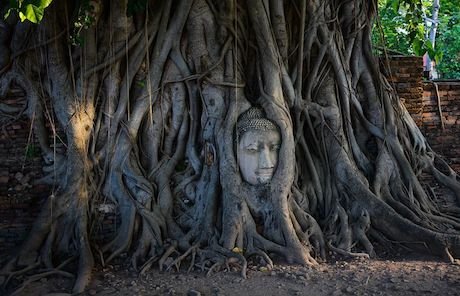
In Part 8 of this series, we looked at the schools that ‘participated’ and ‘did not participate’ in the Third Council of Buddhism, according to the Kathavatthu, the text that deals with the ‘points of controversy’ from schools other than Theravada. As was mentioned in Part 8, the Kathavatthu is classified as a canonical text in the Theravada tradition, as being part of the Abhidhamma Pitaka, although the text has been expanded up until the second century AD, as evidenced by the ‘late’ schools that are mentioned in the text. Likely, the writing started out small and was expanded as more controversial viewpoints from other schools were encountered and dealt with as such.
The Kathavatthu includes a total of 217 points of controversy, divided into twenty-three chapters, where each point is associated with one or more schools, although a few are not assigned to any particular school at all. Due to a large number of doctrinal points covered, I have divided this Part 12 of the series into seven chapters, with each chapter covering one or more of the schools and their doctrinal positions of ‘controversy.’
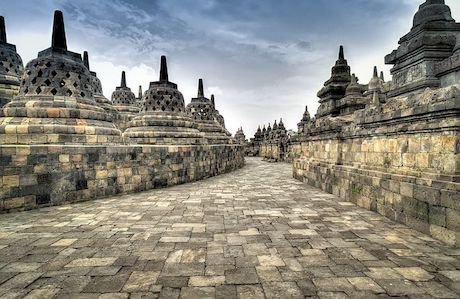
To show the total number of points of ‘controversy’ for each school, I am including a nice overview:
- Vajjiputtakas: 2
- Sammitiyas: 23
- Sabbatthivadins: 5
- Kassapikas: 1
- Mahasanghikas: 26
- Andhakas (Pubbaseliyas, Aparaseliyas, Rajagirikas, Siddhatthikas): 73
- Pubbaseliyas: 30
- Aparaseliyas: 5
- Rajagirikas: 10
- Siddhatthikas: 8
- Gokulikas: 1
- Bhadrayanikas: 1
- Mahimsasakas: 9
- Uttarapathakas: 47
- Hetuvadins: 9
- Vetulyakas (Maha-sunnavadins): 8
- Not assigned to any school: 11
- Not assigned to any school (probably Andhakas): 2
Note that the Andhakas school is a grouping together of four schools, meaning that those 73 points were held by all four schools.
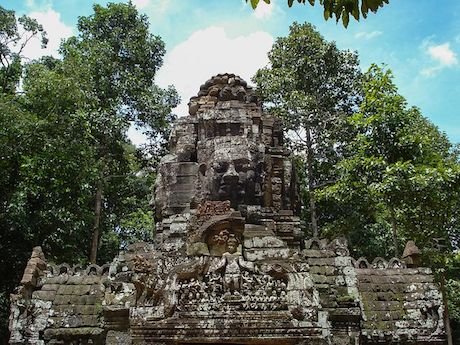
Overview of the chapters that cover the various schools:
- Chapter 1 — Vajjiputtakas, Sammitiyas, Sabbatthivadins
- Chapter 2 — Kassapikas, Mahasanghikas
- Chapter 3 — Andhakas
- Chapter 4 — Pubbaseliyas
- Chapter 5 — Aparaseliyas, Rajagirikas, Siddhatthikas, Gokulikas, Bhadrayanikas, Mahimsasakas
- Chapter 6 — Uttarapathakas
- Chapter 7 — Hetuvadins, Vetulyakas, Not assigned to any school, No points assigned
In this post we’ll be looking at the schools for Chapter 1 — Vajjiputtakas, Sammitiyas, Sabbatthivadins
The given name for the schools in this post follow the Theravada name designation as mentioned in the Kathavatthu text, followed by the Sarvastivada name designation by Vasumitra in his Samaya-bhedoparacanacakra text. The Kathavatthu is divided into twenty-three chapters. Each point of controversy’s headline listed here starts out with the Kathavatthu reference of the book (in Roman numerals) and points, i.e., IX. 4 means book nine, point four.
Section 1 — Vajjiputtakas (Vatsiputriya) (2 points of controversy)
This school is identified by the founder being an arhat named Vatsyaputra. The name of a large group of monks belonging to the Vajjian clan and originating from Vesali, who, one century after the Buddha's death, brought forward ten points that were discussed at the Second Council.
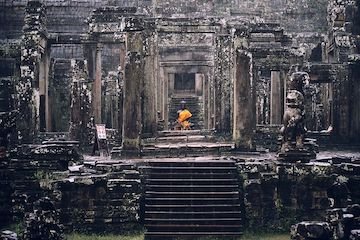
Point 1 — I. 1. Of the Existence of a Personal Entity
That the ‘person’ (puggala) is known in the sense of a real and ultimate fact.
The Theravadin [the text has sakavadin] questions a Puggalavadin (one who believes in the existence of a personal entity, soul, or perduring immortal essence in man) concerning his position. Who among the eighteen schools of thought were Puggalavadins? In the Sasana the Vajjiputtakas and Sammitiyas, and many other teachers besides, not belonging to the Sasana. ‘Person’ means soul, being, vital principle. ‘Is known’ is approached and got at by the understanding, is cognized. ‘Real’: not taken as an effect of magic or mirage, actual. ‘Ultimate’: highest sense, not taken from tradition, or hearsay. ‘Known’ as one of the fifty-seven ultimates of our conscious experience (The five aggregates, twelve sense-organs, and objects, eighteen elements, twenty-two controlling powers.)
Point 2 — I. 2. Of falling away
That an Arahant can fall away from Arahant ship.
Because of such statements in the Suttas as ‘liability to fall away [retrogress], and the opposite, these two things, monks, are concerned with the falling away of a monk who is training’; [AN i. 96] and ‘these five things, monks, are concerned with the falling away of a monk who now and then attains emancipation,’ [AN iii.173] certain sects in the Order incline to the belief that an Arahant can fall away. These are the Sammitiyas, the Vajjiputtiyas, the Sabbatthivadins, and some of the Mahasanghikas. Hence, whether it be their view or that of others, the Theravadin, to break them of it asks this question.’
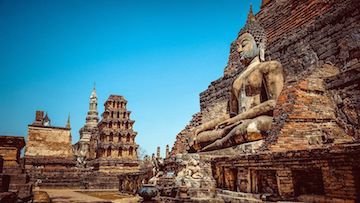
Section 2 — Sammitiyas (Sammatiya) (23 points of controversy)
This school is identified by the founder’s name of Sammita (right measure). In Tibetan sources, they are described as disciples of a teacher named Sammata. The name also means ‘the complete school.’
Point 1 — I. 1. Of the Existence of a Personal Entity
That the ‘person’ (puggala) is known in the sense of a real and ultimate fact.
The Theravadin [the text has sakavadin] questions a Puggalavadin (one who believes in the existence of a personal entity, soul, or perduring immortal essence in man) concerning his position. Who among the eighteen schools of thought were Puggalavadins? In the Sasana the Vajjiputtakas and Sammitiyas, and many other teachers besides, not belonging to the Sasana. ‘Person’ means soul, being, vital principle. ‘Is known’ is approached and got at by the understanding, is cognized. ‘Real’: not taken as an effect of magic or mirage, actual. ‘Ultimate’: highest sense, not taken from tradition, or hearsay. ‘Known’ as one of the fifty-seven ultimates of our conscious experience (The five aggregates, twelve sense-organs, and objects, eighteen elements, twenty-two controlling powers.)
Point 2 — I. 2. Of falling away
That an Arahant can fall away from Arahant ship.
Because of such statements in the Suttas as ‘liability to fall away [retrogress], and the opposite, these two things, monks, are concerned with the falling away of a monk who is training’; [AN i. 96] and ‘these five things, monks, are concerned with the falling away of a monk who now and then attains emancipation,’ [AN iii.173] certain sects in the Order incline to the belief that an Arahant can fall away. These are the Sammitiyas, the Vajjiputtiyas, the Sabbatthivadins, and some of the Mahasanghikas. Hence, whether it be their view or that of others, the Theravadin, to break them of it asks this question.’
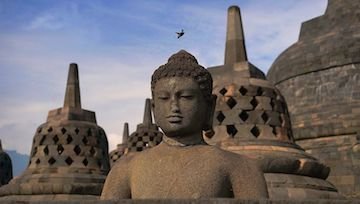
Point 3 — I. 3. Of the Higher Life
That there is no higher life among the devas.
‘The higher life (Brahmacariyavasa) is of twofold import: path-culture and renunciation of the world. No deva practices the latter. But the former is not forbidden them, except to those of the unconscious plane. But some, for instance, the Sammitiyas, do not believe in any path-culture among the higher devas of the Kamaloka, and, beyond them, of the Rupaloka, justifying themselves by the Suttanta passage cited below.’
Brahmacariyavasa: best-conduct-living. The Sammitiya holds by the externals; the Theravadin is more concerned with the essential ethical career.
Point 4 — I. 4. Of Purification Piecemeal
That [the converted man] gives up the corruptions piecemeal / ‘piece by piece’ (Odhis-odhiso)
‘This discussion is to break down the opinion, held now by the Sammitiyas and others, that when Stream-Winners and those in the other paths, through the higher comprehension gained in jhana, attain insight into the nature of illness and so on, the putting away of corruptions [or vices] goes on piecemeal, that is, by one portion at a time.’
Point 5 — I. 5. Of Renouncing Evil
That the average man (Puthujjano, literally ‘one-of-the-ordinary-people,’ a worldling) renounces sensuous passions and ill-will.
This question is asked to break down the opinion held, for instance, at present by the Sammitiyas, that an average man who achieves Jhana, who understands the Truths and becomes a Never-Returner, renounced sensuous passions and ill-will while he was as yet only an average man of the world.
Point 6 — II. 9. Of a Specified Progress in Penetration
That penetration is acquired in segmentary order.
By thoughtlessly considering such Suttas as—
‘Little by little, one by one, as pass, The moments, gradually let the wise,’ etc., (Sutta Nipata verse 962),the Andhakas, Sabbatthivadins, Sammitiyas, and Bhadrayanikas have acquired the opinion that, in realizing the Four Paths, the corruptions were put away by so many slices as each of the Four Truths was intuited.
Point 7 — III. 5. Of the Eighth Man (note 1)
That for the person in the Eighth Stage, outbursts of wrong views and doubt are put away.
Here the question is raised concerning a particular view of both Andhakas and Sammitiyas, namely, that, at the moment of entering on the Path, after qualification and adoption, two of the (ten) corruptions no longer break out in the eighth man—that is, the person who has entered on the stream.
Note 1: Atthama-ko, literally Eighth-er. Of the Four Paths and Four Fruits, this is the lowest, the first reached, or eighth from Arahantship. The correct view was that the victories alluded to belonged only to the next stage—to the ‘moment’ of fruition—making the subject a genuine ‘Stream Winner.’
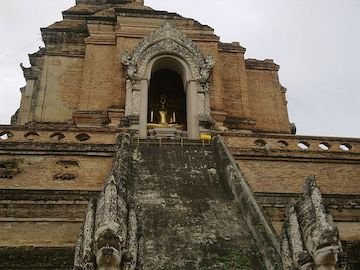
Point 8 — III. 7. Of the ‘Celestial Eye’ (Or vision. The power of apprehending, as visualized, things not accessible to the sense of sight.)
That the fleshly eye, when it is the medium of an idea, (Dhammupatthaddam. ‘Medium’ is, more literally, support, basis) becomes the celestial eye.
This is a view held by the Andhakas and Sammitiyas.
The view, held at present by such as the Andhakas and Sammitiyas, is that the fleshly eye when it is the ‘medium’ (or basis) of things (dhamm’upatthaddam) in Fourth Jhana, becomes the deva-eye. Regarding them, the Sakavadin asks: “Is the fleshly eye?” etc. The opponent assents. Again, being asked: “Is the fleshly eye the deva-eye, and conversely?” he rejects, because he thinks, it is only like that, is not that.
Point 9 — III. 8. Of the Celestial Ear
That the fleshly ear, when it is the medium of an idea, is the celestial ear. Similar to point 8. Most probable adherents, are the Andhakas and Sammitiyas, just like point 8.
Point 10 — VII. 5. Of Utility
That merit increases with utility.
Some, like the Rajagirikas, Siddhatthikas, and Sammitiyas, from thoughtlessly interpreting such Suttas as ‘merit day and night is always growing,’ and ‘the robe, monks, which a monk is enjoying the use of... .,’ hold that there is such a thing as merit achieved by utility.
Point 11 — VIII. 2. Of an Intermediate State
That there is an intermediate state of existence.
Some (as, for instance, the Pubbaseliyas and Sammitiyas), by a careless acceptation of the Sutta-phrase— ‘completed existence within the interval’—held that there is an interim stage where a being awaits re-conception for a week or longer. The counter-argument is based on the Exalted One’s dictum that there are three states of becoming only—the Kama-, the Rupa-, and the Arupa-worlds. [SN ii.8] And it is because of that assertion that the opponent [in so far as he is orthodox] has to deny so many of the questions.
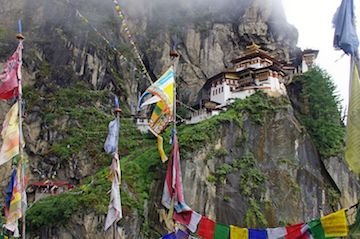
Point 12 — VIII. 7. Of the Senses in the Rupa-Sphere
That is the Rupa-sphere (This includes sixteen grades of devas, the Brahma-heavens being the lowest) the individual has all the six senses.
Some (as, for instance, the Andhakas and Sammitiyas), judging by the Sutta-passage—‘having form, made of mind, with all its primary and lesser parts complete, not deficient in any organ’—imagine that the Brahma-group and the rest had sensations of smell, taste, and touch.
Point 13 — VIII. 9. Of Matter as ethically Good or Bad
That physical actions [involved in bodily and vocal intimations] proceeding from good or bad thoughts amount to a moral act of karma.
Some (as, for instance, the Mahimsasakas and the Sammitiyas) hold that acts of body and voice being, as they are, just material qualities, reckoned as bodily and vocal intimation are morally right if proceeding from what is right, and morally wrong if moving from what is wrong. But it runs the counter-argument, they are to be considered as positively moral, and not amoral—as we are taught—then all the characteristics of the morally good or evil must apply to them, as well as material characteristics.
Point 14 — VIII. 10. Of Vital Power
That there is no such thing as a material vital power.
Some, as, for instance, the Pubbaseliyas and Sammitiyas, hold that, because vital power is an immaterial fact, distinct from consciousness, therefore there is nothing material in it.
Point 15 — VIII. 11. Of a Result of Karma
That because of karma an Arahant may fall away (retrogress) from Arahant ship.
Such is an opinion held, for instance, by the Pubbaseliyas and Sammitiyas, the Arahant, so falling is one who, in a former birth, calumniated one who was then Arahant.
Point 16 — X. 2. Of the Path and Bodily Form
That the physical frame of one who is practicing the Eightfold Path is included in that Path.
Those who, like the Mahimsasakas, Sammitiyas, and Mahasanghikas, hold that the three factors of the Path:—supremely right speech, action, and livelihood—are material, are confronted with the contradiction that, since the elements of the Path are subjective, they imply mental attributes lacking in matter.
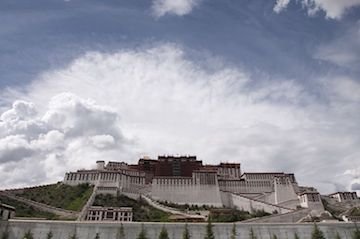
Point 17 — X. 10. Are Acts of Intimation Virtue?
That acts of intimation are moral acts.
Some, like the Mahasanghikas and Sammitiyas, thinking that ‘bodily intimation is karma of deed, vocal intimation is karma of speech,’ believe that such acts have a moral quality. But intimation (as gesture or speech) is a material matter, while morality or virtuous conduct is not so, but is a deliberate (i.e., mental) act of abstinence.
Point 18 — XI. 1. Of Three Facts about Latent Bias
(i.) That latent bias is unmoral (indeterminate).
That latent bias in its seven forms is (i.) unmoral, (ii.) without moral or immoral motive, (iii.) independent of mind, is an opinion held, for instance, by the Mahasanghikas and the Sammitiyas. They allege that it is not right to say that the average man, while moral, or unmoral consciousness is going on, has latent bias, since the motive or condition of such consciousness cannot cause potential bias [to manifest itself], nor is such consciousness conjoined with any form of bias.
Point 19 — XIV. 7. Of Desire as inherent in Heavenly Things
That lust for the things of the Rupa heavens is inherent to and included therein.
Just as sensuous lusts are inherent in the world of sense-experience, and are said to be included in it, the desire for life in the Rupa heavens and the Arupa heavens was held, by the Andhakas and the Sammitiyas, to be as stated.
Point 20 — XV. 11. Of Karma and its Accumulation
That karma is one thing, its accumulation (Upacaya: also means ‘conservation.’) is another.
They who hold this view, for instance, the Andhakas and Sammitiyas, judge that the accumulating of karma goes on automatically, independently of moral action, or mental action.
Point 21 — XVI. 7. Of Matter as Morally Good or Bad
That material qualities are (i.) good or moral, (ii.) bad or immoral.
The Mahimsasakas and Sammitiyas, relying on the Word—acts of body and speech are good or bad’—and that among such acts we reckon intimations of our thought by gesture and language, hold that the physical motions engaged therein are [morally] good or bad.
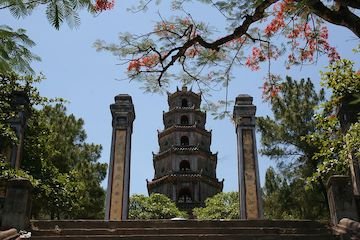
Point 22 — XVI. 8. Of Matter as Result
That material qualities are results (of karma).
Some, like the Andhakas and Sammitiyas, hold that, just as consciousness and its concomitant attributes arise because of karma that has been wrought, so also do material (i.e., corporeal) qualities arise as results (of karma).
Point 23 — XVIII. 7. Of Jhana and its Intervals
That there is an intermediate stage between the First and Second Stages (The words ‘First,’ etc., to ‘Fourth,’ in this discourse must be understood solely concerning the fourfold classification).
The Sammitiyas and certain other of the Andhakas hold the view that, in the Fivefold Jhana series, (when First Jhana is divided into two, according to as it is accompanied or unaccompanied by initial application of thought) the Exalted One did not intend to classify, but only to indicate, three forms (the first and second divide the First Jhana into two aspects, the third refers to the other three Jhanas) of concentration. But not knowing what form of concentration to be possible which is accompanied by sustained thought (savicara), and counting only initial application (vitakka), they hold that the former intervenes between First and Second Jhana, thus making up a later fivefold series.
Section 3 — Sabbatthivadins (Sarvastivada) (5 points of controversy)
This school’s name means All (sabba) Exists (atthi) School (vada). They held that all constituted realities (dharmas) exist in the past, present, and in the future.
Point 1 — I. 2. Of falling away
That an Arahant can fall away from Arahant ship.
Because of such statements in the Suttas as ‘liability to fall away, and the opposite, these two things, monks, are concerned with the falling away of a monk who is training’; [AN i. 96] and ‘these five things, monks, are concerned with the falling away of a monk who now and then attains emancipation,’ [AN iii.173] certain sects in the Order incline to the belief that an Arahant can fall away. These are the Sammitiyas, the Vajjiputtiyas, the Sabbatthivadins, and some of the Mahasanghikas. Hence, whether it be their view or that of others, the Theravadin, to break them of it asks this question.’
‘Falling away’ is, more literally, declined, the opposite of growth. ‘“Falling away” is twofold—from what is won, and from what is not yet won. “The venerable Godhika fell away from that emancipation of will which was intermittent only” (SN i.120), illustrates the former. “See that the reward of your recluse-ship fall not away for you who are seeking it, (while yet more remains to be done!)” (MN i.271) illustrates the latter.’
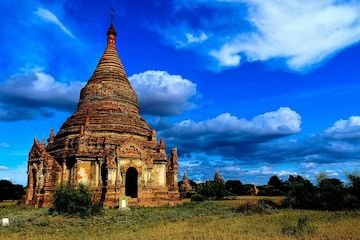
Point 2 — I. 6. Of Everything as Permanently Existing
That everything exists.
This question was asked by one of ours, in order to break down an opinion, held at present by the Sabbatthivadins (Sanskrit Sarvastivadins, literally, ‘everything-exists-believers.’), that, judging by the Suttanta passage: ‘Whatever is material quality, past, present, future,’ etc., all phenomena, past, present, future [once they arise among the aggregate constituents of personal life and experience] persist in that state [literally ‘do not abandon that state’], and that therefore all go on existing.
Point 3 — I. 7. Of what does my Past Consist?
That one’s past consists in [bodily and mental] aggregates.
This is an additional discussion to the previous, the Opponent, in the absence of any new allocation by the Commentator, being doubtless still from the Sabbatthivadins. His ‘opinion is that past and future both exist because the aggregates and other factors of our experience retain their state (as a sort of complex soul).
Point 4 — II. 9. Of a Specified Progress in Penetration
That penetration is acquired in segmentary order.
By thoughtlessly considering such Suttas as—
‘Little by little, one by one, as pass. The moments, gradually let the wise,’ etc., (Sutta Nipata verse 962), the Andhakas, Sabbatthivadins, Sammitiyas, and Bhadrayanikas have acquired the opinion that, in realizing the Four Paths, the corruptions were put away by so many slices as each of the Four Truths was intuited.
Point 5 — XI. 6. Of Concentration
That the continuity of consciousness (Citta-santati) is a concentration of mind (samadhi). (Samadhi means the placing, establishing of consciousness exclusively and voluntarily on any single object. Ekaggata is the essential factor in consciousness, the cultivation of which may bring about the state called Samadhi.)
Some, like the Sabbatthivadins and Uttarapathakas, hold that because of the Word—to spend seven days and nights motionless, speechless, in the experience of absolute bliss’—the flow of consciousness itself may constitute a concentration. They do not take the latter term as meaning collectedness of thought, even when the coefficient of individualizing intentness (ekaggata) has arisen in a momentary unit of consciousness.
In the next article, we’ll discuss how the Theravada school dealt with the doctrinal points from other Buddhist schools, as recorded in their Katha-vatthu text — Chapter 2 — Kassapikas, Mahasanghikas.

- Introduction to the history of Buddhist Councils and Schools-Part 1
- The Buddhist Councils — Who, when, where, and why?Part 2
- The Buddhist Councils — Who, when, where, and why?Part 3
- The History Of ‘Northern Buddhists’ of Sarvastivada - Part 4
- The History Of ‘Northern Buddhists’ of Sarvastivada - Part 5
- Buddhist schools at the time of the First ‘Maha-Kasyapa’ Council at Rajagaha. - Part 6
- Buddhist schools at the time of the First ‘Maha-Kasyapa’ Council at Rajagaha. - Part 7
- Buddhist schools at the time of the Third ‘Moggaliputta Tissa’ ‘Asoka’ Council - Part 8
- Buddhist schools at the time of the Fourth ‘Vasumitra’ ‘Kanishka’ Council at Jalandhar. - Part 9
- Buddhist schools in the 5th Century A.D. according to the Chinese pilgrim Fa-hsien - Part 10
- Buddhist schools in the 5th Century A.D. according to the Chinese pilgrim Fa-hsien-Part 11
- Buddhist schools in the 7th Century A.D. according to the Chinese pilgrim Yuan-Chuang-Part 11
- The Ten Stages of the Mahayana Bodhisattva Path-The Two Preliminary Stages-Part 1
- The Ten Stages of the Mahayana Bodhisattva Path-The Two Preliminary Stages-Part 2
- The Ten Stages of the Mahayana Bodhisattva Path-The Two Preliminary Stages-Part 3
- The Ten Stages of the Mahayana Bodhisattva Path-The Two Preliminary Stages-Part 4
- The Ten Stages of the Mahayana Bodhisattva Path-The Two Preliminary Stages-Part 5
- The Ten Stages of the Mahayana Bodhisattva Path-The Two Preliminary Stages-Part 6
- The Ten Stages of the Mahayana Bodhisattva Path-The Two Preliminary Stages-Part 7
- The Ten Stages of the Mahayana Bodhisattva Path-The Two Preliminary Stages-Part 8
- The Ten Stages of the Mahayana Bodhisattva Path-The Two Preliminary Stages-Part 9
- The Ten Stages of the Mahayana Bodhisattva Path-The Two Preliminary Stages-Part 10
- The Ten Stages of the Mahayana Bodhisattva Path-The Two Preliminary Stages-Part 11
- The Deathless In Buddhism
- The "Timeless" Teaching-Being Beyond Temporality
- The Nine Successive Cessations In buddhist Meditations - Part 1
- The Nine Successive Cessations In buddhist Meditations - Part 2
- The Nine Successive Cessations In buddhist Meditations - Part 3
- The Twelve Links Of Dependent Origination
- THINGS to DEVELOP and THINGS to AVOID
- The First Noble Truth
- The Second Noble Truth
- The Third Noble Truth
- The Fourth Noble Truth
- 10 Fold Path Series
- EATING MEAT — WHY THE BUDDHA WAS NOT A VEGETARIAN
I will flag comment spam at 1% strength. If you keep on spamming my post, I will flag you at 100%. I don't care if you have limited English abilities, write a couple of sentences about this article, no copy-paste, please. I will flag: one sentence comments, links to your blog and begging for up-votes and follows. Also, I will flag comments that have nothing to do with my blog's article. I will also check your comment section to see if you have been comment spamming on other blogs.
Some of the teachings are little different from ours. But conceptually both lessons are leading us to seeking the Nirvana! With your knowledge of Buddhism you are sharing a great gift to STEEMIANS! Coz it's hard to find people who knows Abhidhamma and who could share those teachings in a serious of articles. But my dear friend you are doing it here!@reddust,
Cheers~
Thank you for your work and kindness @amigoponc, I have found similarities between Buddhism and our main religions esoteric practices. I think the main connecting force through all religions and philosophies are the virtues and living a simple life, which frees us from most stressors if our countries are not in war or suffering from famine. I am grateful for our friendship, healthy virtuous friendship is one of the most important factors on the path of waking up to our human potential and understanding reality as it is.
long time no see, hopefully you are always my friend, I also spend my days in my papaya and vegetable garden ...
I am also learning to meditate to feel how the Sufis enjoy their lives in all limitations.
because according to the Sufi real life is life by curbing all lust desires from luxury and the delights of life, like eating, making love, shopping,
but I certainly will not be able to fully like them, but at least I try to understand their lives ,, he he he
“Bad people...are in conflict with themselves; they desire one thing and will another, like the incontinent who choose harmful pleasures instead of what they themselves believe to be good.”
― Aristotle, Nicomachean Ethics I had a nice vacation from social media, writing and painting @steemitcountry! I am happy to see you and your lovely wife @steemitnatural. I have found that most religious and philosophical advice no matter what religion advocates living a moderate virtuous life.
all religions have their respective histories, history proves that unity creates peace, but usually the more potential differences in division are greater, such as the history of Islam and the history of Sufis, may we always live in peace ,,I'm glad I can see you back @reddust ...
I love the Sufi philosophy, I have read a great deal before I met you and your husband @steemitnatural and now I have good friends that help me find understanding and acceptance of our different belief system and culture, thank you so much for your help and friendship.
@reddust, Glad to received your another part of Indian Buddhism series after some long time. there are has some differences between our learning. But no more bigger space. Only little bit. You have wrote nice overview here. Actually Buddha teachings has most spiritual concepts if well matching it. Smadhi created best meditation of mindset deeply. Someone harder to understand coz you giving extra ordinary learning. Well...I take a time for better understand. Nice you decided to share.
Hello @madushanka, I've learned a lot as well, especially about how the schools viewed Jhana, samadhi, the aggregates, matter, and consciousness, which are always points of contention.
buddhists teacher are so good and they are working hard to expand their religion purity and peacefulness in this world. i were totally unknown about them. after following your blog i can learn many things about buddhist..... thank you a lot for giving us many valuable information about buddhism. love to stay with you...
Several thousand years of hard work @steemibu351, Buddhism is a long lived religion or philosophy depending on one's view.
you are right..... if anyone work hard .. success must follow you
I sense that the differences in schools might loosely be paralleled to the different types of denominations in the Christian faith. I missed these articles and wondered how you are doing. You put a lot of work in these writings. Blessings @reddust.
I've said this before @enjoywithtroy, it seems even enlightened humans like to argue...lololol!
I remember reading about the arguments between Jesus and his followers as well, heck people argued with God as well.
Thank goodness we are also loveable and have the virtues to protect us if we decide to put them into practice.
now buddhism are expanding very fast among this world..... in future they will develop more for their hard work
This is amazing information
Thanks for sharing..
buddhism for better..... buddhism is one of the most peaceful religion had i ever seen
WARNINGCONFIRMED SCAM!
DO NOT FOLLOW any instruction and DO NOT CLICK on any link in the comment! - The message you received from @raydonovan is a
For more information, read this post:
https://steemit.com/steemit/@arcange/phishing-reported-post-copied-without-your-permission
If you find my work to protect you and the community valuable, please consider to upvote this warning or to vote for my witness.